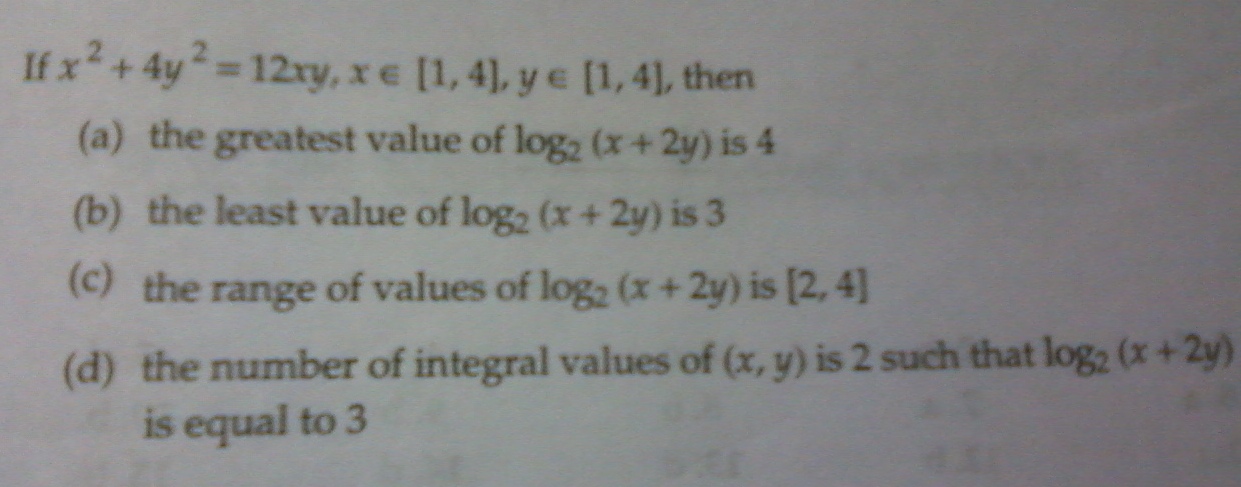Q. 1:- (0.2)25=225x10-25. Now, log10225≈7.5 which means that there are 8 digits in 225. In 10-25, after the decimal point, there are 24 zeroes and one 1, that is 25 digits. So, in (.2)25, the last 8 digits will be of 225 and the 17 before that will all be zero. (B).
4 Answers
2. Draw a rough graph of y = log2(x+5) and y=6-x.
You'll see that they intersect once. Thus the given eq. has one solution.
3. log1/√2(sinx) > 0
→log2(-0.5) (sinx)>0
→(-1/2)log2sinx>0
→log2sinx<0
→sinx<1
Simultaneously sinx>0 (domain)
only one value of x satisfies the given relation in [0,pi/2] which is pi/4
Thus in [0,4pi] there will be 4 solutions.
2 in [0,Ï€]
0 :[Ï€,2Ï€] ; 2 :[2Ï€,3Ï€] ; 0:[3Ï€,4Ï€]
4. Proceeding similarly as in the previous sum, you will see that the ineq. reduces to sin(x+θ)≥1 where cosθ=1/3
Therefore, x+θ=π/2
or, x = asin(1/3)
In [-2Ï€,2Ï€] there will again be 4 values of x.
Answer should be D.
Q. 5:- x2+y2=12xy or, (x+2y)2=16xy. Now, log2(x+2y)2=log2(16xy)=4+log2(xy). For the given range of x and y, log2(x+2y)2 lies between 4 and 8. So, log2(x+2y) lies between 2 and 4. →(C).
It is apparent that for the logarithm to be 3, xy=4 and the ordered pairs are (4, 1), (2, 2), (1, 4). So (D) is not correct.





